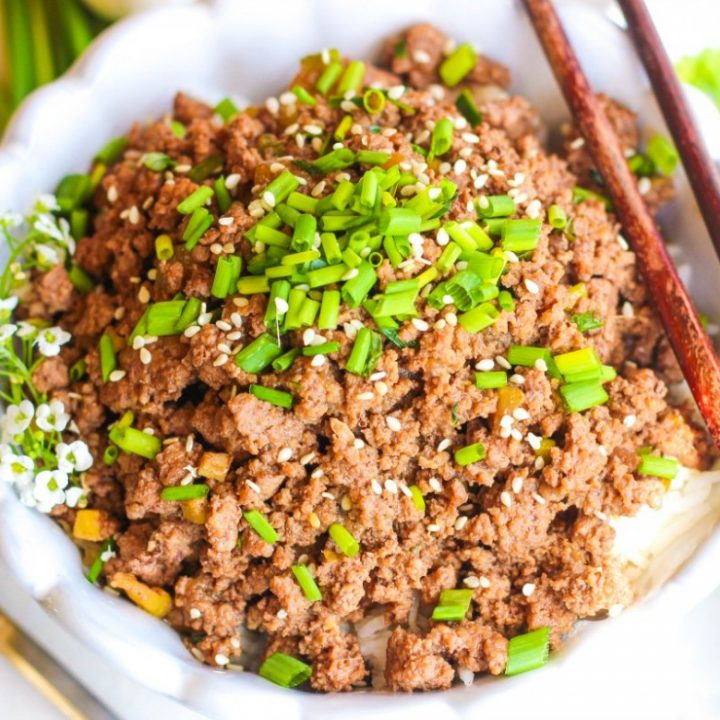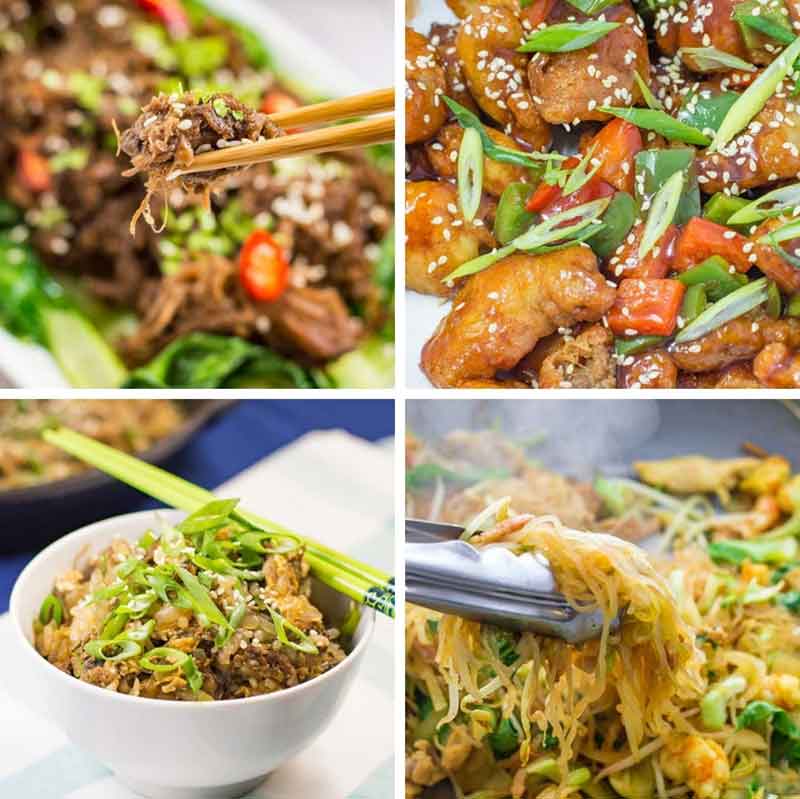Embark on a culinary adventure that harmoniously blends the vibrant flavors of Asian cuisine with the transformative principles of the ketogenic diet. Discover the tantalizing world of Asian keto recipes, where taste and well-being intertwine seamlessly.
From aromatic stir-fries to rich curries and savory soups, this guide unveils a treasure trove of delectable dishes that cater to your ketogenic lifestyle without compromising on flavor. Prepare to tantalize your taste buds and nourish your body with a symphony of Asian-inspired culinary creations.
Asian Ketogenic Diet Overview
The Asian ketogenic diet is a variation of the ketogenic diet that is tailored to the culinary traditions and preferences of Asian cuisine. It emphasizes the consumption of high-fat, moderate-protein, and low-carbohydrate foods, with a focus on traditional Asian ingredients such as fish, seafood, vegetables, and fermented foods.
Like the standard ketogenic diet, the Asian ketogenic diet aims to induce a state of ketosis, in which the body burns fat for energy instead of glucose. This can lead to a number of potential benefits, including weight loss, improved blood sugar control, and reduced inflammation.
Benefits of the Asian Ketogenic Diet
- Weight loss: The Asian ketogenic diet can be effective for weight loss, as it promotes satiety and reduces hunger cravings.
- Improved blood sugar control: The Asian ketogenic diet can help to improve blood sugar control by reducing insulin resistance and promoting the production of ketones, which can help to lower blood glucose levels.
- Reduced inflammation: The Asian ketogenic diet may also help to reduce inflammation, which is a major risk factor for a number of chronic diseases.
Potential Drawbacks of the Asian Ketogenic Diet
- Nutrient deficiencies: The Asian ketogenic diet can be restrictive, and it is important to ensure that you are getting all of the nutrients that you need. It is recommended to talk to a healthcare professional before starting the Asian ketogenic diet to make sure that it is right for you.
- Side effects: The Asian ketogenic diet can cause a number of side effects, including fatigue, headaches, and constipation. These side effects are usually temporary and will subside as your body adjusts to the diet.
Popular Asian Keto Recipes

The Asian ketogenic diet offers a wide range of flavorful and satisfying recipes that cater to the ketogenic lifestyle. Here are some well-known Asian keto recipes that are easy to prepare and provide a delicious and nutritious meal:
Stir-Fries
- Keto Beef and Broccoli Stir-Fry: A classic stir-fry dish made with tender beef, crisp broccoli, and a savory sauce. It is a low-carb, high-fat meal that is packed with protein and vegetables.
- Keto Mongolian Chicken Stir-Fry: A flavorful stir-fry featuring tender chicken coated in a sweet and savory Mongolian sauce. It is a popular dish that is both delicious and keto-friendly.
- Keto Pad Thai: A Thai-inspired stir-fry with rice noodles made from zucchini. It is a low-carb alternative to traditional Pad Thai and is packed with vegetables and protein.
Curries
- Keto Thai Green Curry: A fragrant and creamy curry made with green chilies, coconut milk, and tender chicken or tofu. It is a flavorful dish that is perfect for a ketogenic diet.
- Keto Butter Chicken: A rich and flavorful Indian curry made with tender chicken in a creamy tomato-based sauce. It is a popular dish that is both satisfying and keto-friendly.
- Keto Japanese Curry: A mild and savory curry made with Japanese curry roux, vegetables, and tender meat. It is a comforting dish that is perfect for a ketogenic diet.
Soups
- Keto Tom Yum Soup: A spicy and sour Thai soup made with a flavorful broth, shrimp, and vegetables. It is a low-carb, high-fat soup that is perfect for a ketogenic diet.
- Keto Pho: A Vietnamese soup made with a rich beef broth, rice noodles made from shirataki, and tender beef or chicken. It is a low-carb, high-fat soup that is both satisfying and keto-friendly.
- Keto Egg Drop Soup: A light and savory Chinese soup made with egg, chicken broth, and vegetables. It is a low-carb, high-fat soup that is perfect for a ketogenic diet.
Meal Planning and Customization
Meal planning is crucial for adhering to the Asian keto diet and achieving your health goals. Here’s a sample meal plan and tips for customizing it to suit your preferences and dietary restrictions.
Sample Asian Keto Meal Plan for a Week
- Monday: Breakfast
- Scrambled eggs with spinach and bacon; Lunch
- Keto chicken stir-fry; Dinner
- Salmon with roasted vegetables.
- Tuesday: Breakfast
- Keto breakfast casserole; Lunch
- Tuna salad with lettuce wraps; Dinner
- Keto-friendly sushi.
- Wednesday: Breakfast
- Chia seed pudding; Lunch
- Leftover keto chicken stir-fry; Dinner
- Chicken and broccoli with coconut milk sauce.
- Thursday: Breakfast
- Greek yogurt with berries; Lunch
- Bunless cheeseburger with salad; Dinner
- Keto-friendly pad Thai.
- Friday: Breakfast
- Eggs with avocado; Lunch
- Leftover keto-friendly sushi; Dinner
- Keto pizza with almond flour crust.
- Saturday: Breakfast
- Keto pancakes; Lunch
- Out to eat at a keto-friendly restaurant; Dinner
- Grilled steak with cauliflower mash.
- Sunday: Breakfast
- Bacon and eggs; Lunch
- Leftover grilled steak; Dinner
- Roasted chicken with vegetables.
Tips for Customizing Your Meal Plan
- Dietary Restrictions: If you have any dietary restrictions, such as allergies or intolerances, adjust the meal plan accordingly. For example, if you’re allergic to nuts, avoid almond flour crusts and use a different crust option for keto pizza.
- Preferences: Choose recipes that align with your taste preferences. There are numerous Asian keto recipes available, so explore different options until you find ones you enjoy.
- Macros: Track your macros (fat, protein, and carbohydrates) to ensure you’re staying within the recommended ranges for a ketogenic diet.
- Variety: Include a variety of foods from all food groups to ensure you’re getting all the essential nutrients your body needs.
Key Ingredients and Substitutions

The foundations of Asian keto recipes rely on a unique blend of ingredients that provide flavor, texture, and nutritional value. Understanding these key components and their potential substitutes is crucial for those with allergies or dietary limitations.
The cornerstone of Asian keto cooking is the use of low-carb vegetables such as leafy greens (bok choy, spinach), cruciferous vegetables (broccoli, cauliflower), and mushrooms. These provide volume and essential nutrients without significantly impacting carb intake.
Protein Sources
- Fatty fish (salmon, tuna): Rich in omega-3 fatty acids and essential proteins.
- Chicken and beef: Lean protein sources with low carb content.
- Eggs: Versatile and nutrient-dense, providing protein and healthy fats.
li>Tofu and tempeh: Plant-based protein alternatives for vegetarians and vegans.
Fats and Oils
- Coconut oil: High in saturated fat and provides a tropical flavor.
- Olive oil: Rich in monounsaturated fats and antioxidants.
- Avocado oil: Neutral flavor and high in healthy fats.
Sauces and Seasonings
- Soy sauce: Traditional Asian flavoring agent, but contains carbs; consider using low-sodium tamari or coconut aminos as substitutes.
- Fish sauce: Umami-rich condiment; substitute with Worcestershire sauce for those with fish allergies.
- Ginger and garlic: Essential aromatics; no suitable substitutes.
Health Considerations
The Asian ketogenic diet, like any other diet, has potential health benefits and risks.
Understanding these considerations is crucial for making informed decisions and maintaining well-being while following the diet.
The Asian ketogenic diet may offer certain health benefits, including improved blood sugar control, reduced inflammation, and weight loss. However, it is important to note that these benefits may vary depending on individual factors and overall health status.
Potential Risks
The Asian ketogenic diet can pose some potential risks, especially if followed without proper guidance and monitoring. These risks include:
- Electrolyte imbalance: The diet’s restriction of carbohydrates can lead to a loss of electrolytes, such as sodium, potassium, and magnesium, which can cause fatigue, muscle cramps, and other symptoms.
- Kidney stones: The high protein intake in the diet can increase the risk of kidney stones in susceptible individuals.
- Nutrient deficiencies: The restrictive nature of the diet can make it difficult to obtain adequate amounts of certain nutrients, such as fiber, vitamins, and minerals.
Recommendations
To mitigate the potential risks associated with the Asian ketogenic diet, it is recommended to:
- Consult with a healthcare professional before starting the diet to assess individual suitability and monitor progress.
- Monitor electrolyte levels and supplement as needed.
- Consume a variety of nutrient-rich foods from all food groups to ensure adequate intake of vitamins, minerals, and fiber.
- Hydrate adequately to prevent electrolyte imbalance.
Recipe Variations and Inspirations
Embark on a culinary adventure by exploring creative variations of beloved Asian keto recipes. Dive into the depths of flavor possibilities and discover inspiration for crafting your own delectable dishes that adhere to the ketogenic principles.
Experiment with alternative ingredients and seasonings to create unique twists on traditional dishes. Embrace the versatility of Asian cuisine by incorporating keto-friendly substitutes without compromising on taste or authenticity.
Classic Dishes with a Keto Twist
- Transform classic Pad Thai into a keto delight by using shirataki noodles instead of rice noodles and incorporating a flavorful sauce made with coconut milk, peanut butter, and a touch of sweetener.
- Reimagine crispy spring rolls with a keto makeover by using a combination of ground pork, vegetables, and almond flour as a filling, wrapped in keto-friendly wonton wrappers.
- Indulge in a keto-friendly version of Vietnamese pho by replacing rice noodles with zucchini noodles and using a flavorful broth made with bone broth, ginger, and star anise.
Creative Keto Inspirations
- Craft a keto-friendly stir-fry with a vibrant medley of vegetables, tender meat, and a savory sauce thickened with almond butter or coconut cream.
- Experiment with keto-friendly sushi by using cauliflower rice as a base and filling it with a variety of seafood, vegetables, and a tangy keto-friendly sauce.
- Delight in a keto-friendly version of dumplings by using a mixture of ground meat, vegetables, and almond flour as a filling, wrapped in keto-friendly dumpling wrappers.
Final Summary
As you delve into the realm of Asian keto recipes, remember that customization is key. Tailor your meal plan to suit your unique preferences and dietary needs, ensuring a balanced and enjoyable ketogenic journey. Embrace the culinary creativity that this diet offers, experimenting with different ingredients and flavors to craft dishes that resonate with your palate and well-being.
Frequently Asked Questions
Is the Asian ketogenic diet suitable for everyone?
While the Asian ketogenic diet can be a beneficial dietary approach for many, it’s essential to consult with a healthcare professional before embarking on this or any significant dietary change, especially if you have underlying health conditions or dietary restrictions.
How do I ensure I’m getting enough nutrients on an Asian keto diet?
To ensure adequate nutrient intake on an Asian keto diet, focus on consuming nutrient-rich foods such as leafy greens, low-carb vegetables, and high-quality protein sources. Consider incorporating supplements if necessary, but always consult with a healthcare professional for personalized advice.
Can I enjoy Asian keto recipes if I have allergies or dietary limitations?
Absolutely! Many Asian keto recipes can be easily adapted to accommodate allergies and dietary limitations. Substitute ingredients as needed, ensuring that you maintain the desired macronutrient balance. Refer to the guide’s section on key ingredients and substitutions for helpful tips.
